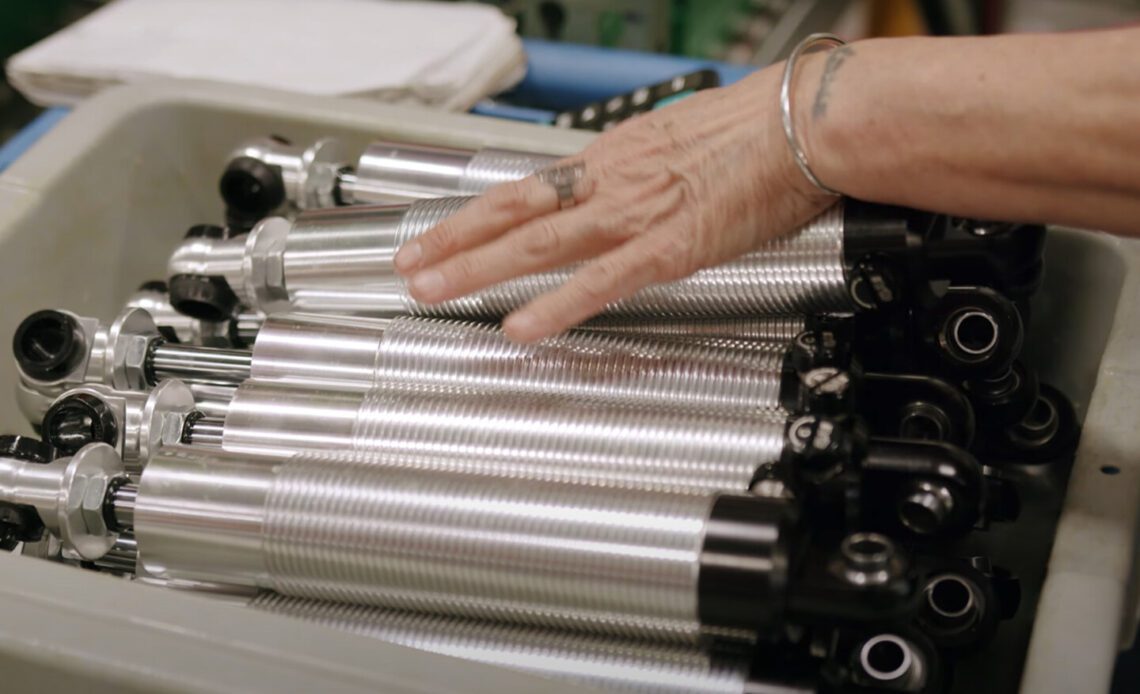Within their Lakeville, Minnesota production facility, QA1 uses exclusive manufacturing processes developed to create various lines for their adjustable racing shocks.
Beginning the process, over a dozen CNC machining centers operate three daily shifts. The various components for their racing shocks, including pistons, glands, bodies, and bases, are created in-house for their single- and double-adjustable shocks.
Each shock component begins as raw material, then the magic happens. Their huge manufacturing facility is filled with computerized machining centers and a highly trained staff of craftsmen.
Clint Grandahl, a manufacturing engineer at QA1 explains, “On completion, many of our components enter the plating process. QA1 uses various plating techniques that offer great looks, durability, and a proper finish on wearable surfaces.”
Grandahl continues, “Following the plating process, each part is thoroughly inspected as they move to our sub-assembly stations. To validate our machining and plating processes, we have a fully staffed quality department with many state-of-the-art optical measurement devices and highly trained inspection staff.”
QA1 implements robotic machinery to assist in the machining processes and move components between stations. Following the in-house plating processes, the subassembly components are carefully assembled.
“Once the shock is born, we send it through an automated filling station which pumps oil into the shock and removes all air,” Grandahl describes. “Completing this wet assembly process, a serialized closure nut is added to provide maximum traceability when we run each shock across our dynos.”
The QA1 shock dynos guarantee the compression and rebound specs are met for that specific shock. Once dyno inspection is completed, the shock then moves to an automated wash system that removes any manufacturing residues.
Each shock is scrutinized by a computerized shock dyno, thoroughly cleaned in an automated wash system, and is assembled with varied mounting hardware for specific part numbers.
The completed shock then has final components added to accommodate different mounting configurations. From there, each shock enters a final overall inspection and is packaged for delivery.
The efforts for QA1 technology continue beyond their manufacturing facilities. The company’s extensive instructions included with each shock, their robust online technical library, and a dedicated tech service team can help you…
Click Here to Read the Full Original Article at DragzineDragzine…



